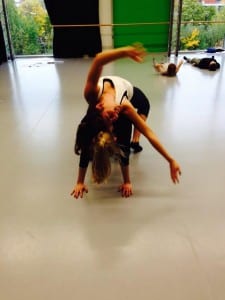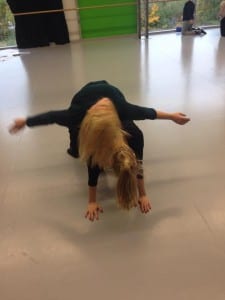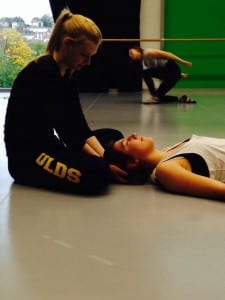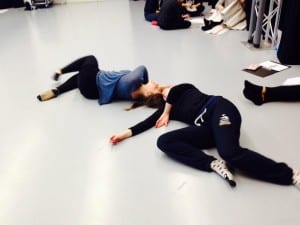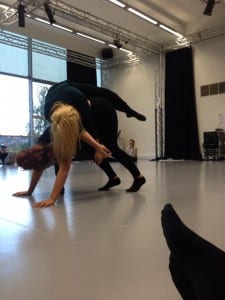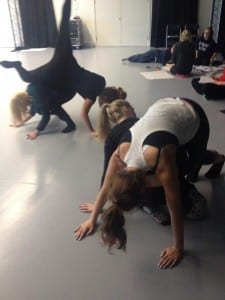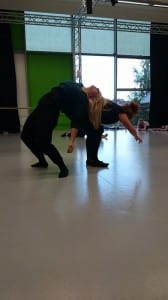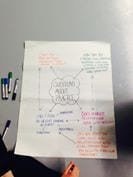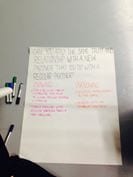Following on from our last class we used the question we had created which was, “Can you apply the same trust and relationship with a new partner that you do with a regular partner?” and explored this question in a research lab. We used different exercises which helped us to explore our question, we began with the ‘pebble’ exercise from week 3. We began by rolling over every person in our group, some of them were regular partners and some were non-regulars, we wanted to see if there was a difference in trust between the two types of partners. After everyone in our group had done this we established that for this most part there was not a lack of trust towards the new partner however, we were aware that being on a low level made it much more easier to trust your partner.
Photos from the higher level of the ‘pebble exercise’ on all fours.
Following on from this, we worked on a high and low level by exploring the ‘head’ exercises, also from week 3, to see if the level and the use of the head had a larger effect on trust. In this exploration we used myself as the main subject and I originally underwent the movement with my partner which I explored this with originally in week 3, then I repeated the exercise with my eyes shut dancing with an unknown partner in order to try and determine two opposites. I was very relaxed and trusting with my regular partner however, I was as relaxed with my unknown partner and if anything having my eyes shut made me even more relaxed and trusting.
Head exercise with a regular partner.
Head exercise with a non-regular partner.
To end of research lab we had 20 minutes for a Contact Improvisation jam, in which we could choose to move in and out of in order to not only experience but to also observe. The main aims for this jam were to see if we only worked with regular partners or if we mixed with each other and to also see if there were any differences in trust or relationships between partners. Overall we all felt as if we trusted each other equally however, sometimes a relationship would not always develop, and personally some of the best relationships I created were with non-regular partners. This may have been due to the fresh quality that being with a new partner brings as you don’t have habitual movements that you explore together. Moreover we found that trusting someone has more to do with whether they look confident in themselves, as even if they are a regular partner, if they don’t look confident taking their own weight, you are less likely to trust them to take your whole weight.
Photos from the end jam session.
If were to re-do this research lab we would have begun with a jam as well as one at the end so that we could take note of any changes which occurred also, from doing the exercises before the jam we had already built up trust between each other so doing the jam at the beginning would have been a more true way to notice differences in trust and relationship. Moreover, although some of us were not regular partners in Contact Improvisation, we have all known each other for over a year so we naturally trust each other more than complete strangers would. Due to this it would have been more accurate to incorporate people who had never met each other before as well as known people so we would try and incorporate this if we were to re-do this research lab.
